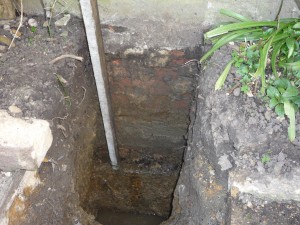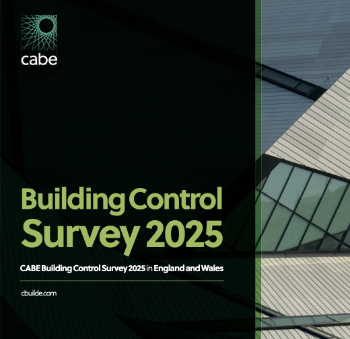Trial pit
A trial pit (also known as a test pit) is a type of intrusive ground investigation that is used as a means of determining the condition of the ground, typically before beginning construction works.
Trial pits are commonly used to investigate shallow ground conditions to develop an understanding of the profile of soils within the ground. They can be particularly useful where buried structures, variable conditions or contamination is suspected or needs further investigation.
They can be excavated by hand or using a backhoe excavator, generally to a depth of up to 3.5-4.5 m. If a trial pit is deeper than 1.2 m and is intended to be entered by people, it should be made secure against the possibility of structural collapse.
Trial pits (or trenches) can be more cost-effective than boreholes but they cannot reach the same depth. Trial pits can also excavated relatively quickly. However, they can cause significant surface disturbance and it can be difficult to properly fill excavations when the pit is no longer needed.
[edit] Related articles on Designing Buildings Wiki
Featured articles and news
Designing Buildings reaches 20,000 articles
We take a look back at some of the stranger contributions.
Lessons learned from other industries.
The Buildings of the Malting Industry. Book review.
Conserving places with climate resilience in mind.
Combating burnout.
The 5 elements of seiri, seiton, seiso, seiketsu and shitsuke.
Shading for housing, a design guide
A look back at embedding a new culture of shading.
The Architectural Technology Awards
The AT Awards 2025 are open for entries!
ECA Blueprint for Electrification
The 'mosaic of interconnected challenges' and how to deliver the UK’s Transition to Clean Power.
Grenfell Tower Principal Contractor Award notice
Tower repair and maintenance contractor announced as demolition contractor.
Passivhaus social homes benefit from heat pump service
Sixteen new homes designed and built to achieve Passivhaus constructed in Dumfries & Galloway.
CABE Publishes Results of 2025 Building Control Survey
Concern over lack of understanding of how roles have changed since the introduction of the BSA 2022.
British Architectural Sculpture 1851-1951
A rich heritage of decorative and figurative sculpture. Book review.
A programme to tackle the lack of diversity.





















